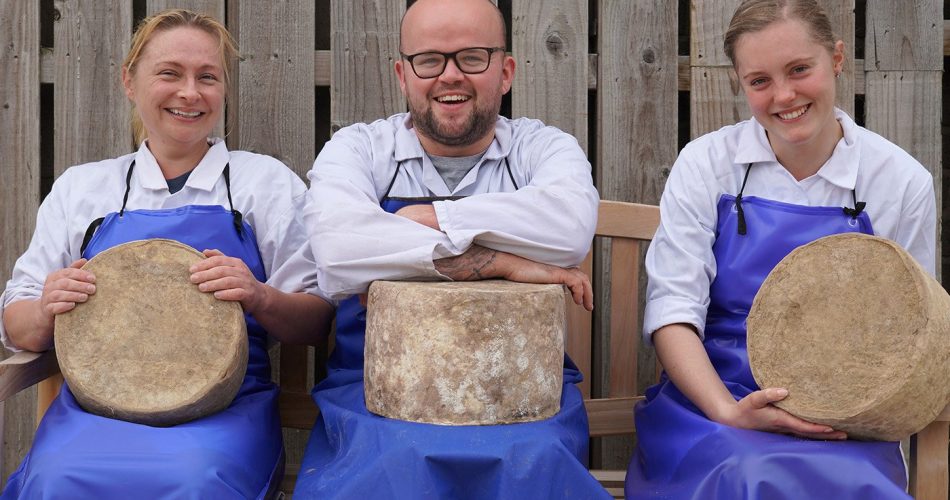Behind the Scenes with Cheese Makers Melbourne: Featuring Floridia Cheese
Behind the Scenes with Cheese Makers Melbourne: Featuring Floridia Cheese
Blog Article
Unlocking the Tricks of Artisanal Cheese Making: A Detailed DIY Guide
In the realm of culinary workmanship, artisanal cheese making stands as a testament to the delicate balance in between practice and advancement. As we begin on this journey to debunk the art of producing splendid cheeses, we are encountered with a tapestry of keys and skills waiting to be untangled.
Choosing the Right Milk
When embarking on the journey of artisanal cheese production, the option of milk plays an essential duty in identifying the high quality and features of the end product. The kind of milk chosen impacts the taste, appearance, and overall profile of the cheese. Raw milk, straight from the pet, is favored by many artisanal cheesemakers because of its unique mix of enzymes, microorganisms, and taste compounds. Nonetheless, making use of raw milk includes policies and threats, making pasteurized milk a much safer choice for beginners.
Furthermore, the resource of the milk, whether from cows, goats, lamb, or buffalo, contributes unique flavors and characteristics to the cheese. Each type of milk brings its very own subtleties, enabling for a vast range of cheese varieties to be crafted based on the chosen milk.
Culturing and Coagulating
To launch the cheese-making process, the crucial steps of culturing and coagulating should be carefully performed to change milk right into curds and whey. Culturing involves introducing useful microorganisms to the milk, which after that starts the fermentation process. These bacteria convert lactose (milk sugar) into lactic acid, creating the acidic environment essential for coagulation. The sort of culture used can dramatically influence the flavor, texture, and ripening of the final cheese product.

The timing and temperature control throughout culturing and coagulation are vital elements that influence the last outcome of the cheese. Correct execution of these actions is vital to make certain the desired texture, taste, and uniformity of the artisanal cheese being created.
Draining and Pushing Curds
After the milk proteins have actually coagulated and the curds have actually been cut to launch whey, the following important step in artisanal cheese making includes draining and pressing the curds to achieve the desired appearance and uniformity of the last cheese product. The time for draining can differ depending on the type of cheese being made and the desired dampness content.
Once the curds have completely drained pipes, Read More Here the following step is pressing. Pressing aids get rid of any type of staying whey and compacts the curds to create a strong cheese wheel. Pressing can be done making use of specialized cheese presses that apply constant and gentle stress over an amount of time. The duration and stress applied during pushing will affect the last structure of the cheese, from soft and velvety to hard and firm. Proper draining pipes and pushing are critical actions that considerably influence the top quality and characteristics of the artisanal cheese being created.
Aging and Flavoring Techniques
Implementing meticulous aging and flavor strategies is critical in boosting the deepness and complexity of artisanal cheeses, raising their preference accounts to exquisite degrees of improvement and refinement. Aging plays an important duty in establishing the distinct flavors and textures that differentiate artisanal cheeses.
Flavoring strategies also add substantially to the last taste of artisanal cheeses. Cheesemakers might choose to introduce additional flavors by incorporating active ingredients such as herbs, spices, or even fruits into the cheese during the production process. In addition, some cheeses are washed or massaged with various fluids, such as brine or alcohol, to boost their textures and flavors.
Covering and Storing Cheeses

Final Thought
In conclusion, grasping the art of artisanal cheese making entails thoroughly selecting the best milk, adhering to accurate culturing and coagulating procedures, draining and pushing curds successfully, and utilizing various aging and flavor methods. By following these steps vigilantly and with interest to detail, you can develop your own scrumptious and one-of-a-kind cheeses at home. Bear in mind to cover and keep your cheeses correctly to ensure ideal flavor and texture advancement. Pleased cheese making!
Each kind of milk brings its very own subtleties, permitting for a large variety of cheese varieties to be crafted based on the selected milk.After the milk healthy proteins have coagulated this page and the curds have actually been cut to release whey, the next important action in artisanal cheese making includes draining pipes and pressing the curds to achieve the wanted texture and consistency of the last cheese item. A lot of cheeses should be covered in wax paper or cheese paper to allow them to breathe while protecting them from drying out. For cheeses that require to continue aging, such as bloomy peels or cleaned peels, guarantee they are kept in a cool environment like a cheese cave or a fridge set to the appropriate temperature. By paying focus to the wrapping and storage space of artisanal cheeses, cheese makers and enthusiasts can maintain the honesty of these delicacies and totally appreciate their intricate flavors.
Report this page